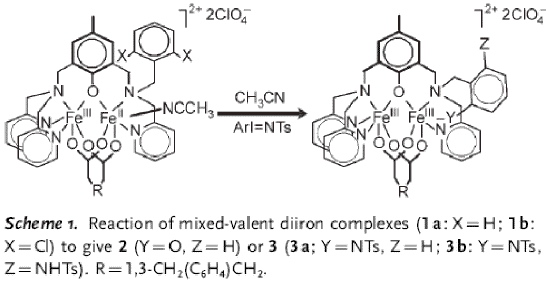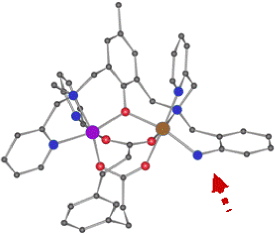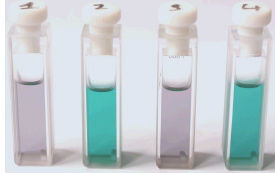Published on 25 January 2019
Body text 1
Diiron complexes of unsymmetrical binucleating ligands are developed as potential models for diiron oxygenases. They have revealed an interesting ability to mediate a multiple intramolecular tosylamination and to catalyze the tosylamination of various aliphatic substrates. Their mechanism of action is currently intensively studied.

The diiron complex mediates both mono- and di-tosylamination of the benzyl branch. The monoaminated complex has been fully characterized by X-ray crystallography and magnetic spectroscopies. It is best described as a diferric anilinate.
See
Avenier F, Goure E, Dubourdeaux P, Sénèque O, Oddou JL, Pecaut J, Chardon-Noblat S, Deronzier A and Latour JM
Multiple aromatic amination mediated by a diiron complex.
Angewandte Chemie International Edition, 2008, 47(4): 715-717
The mixed valent diiron complex of the ligand bearing an aniline group can be deprotonated by an amine both in solution and in the solid state. This reversible reaction occurs with a drastic color change which can be used to detect the amine.
 | X-ray structure of the diiron aniline (red arrow) complex. (FeIII: violet, FeII: brown). The complex has a blue grey color (1). Upon reaction with amines (NH3, NEt3), the solution turns intense green (2) and the system can be shuttled back (3) and forth (4).
 |
Top page